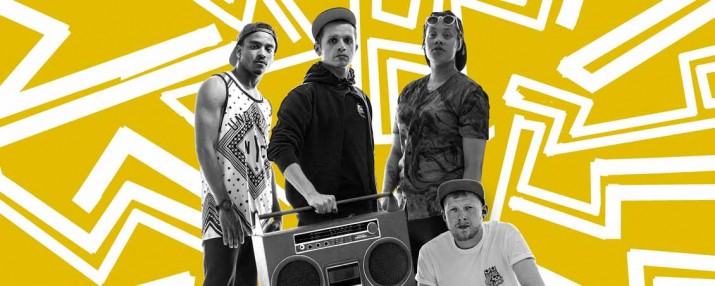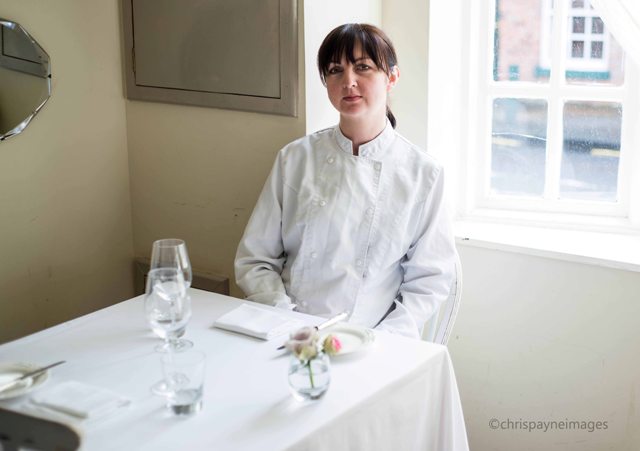Where do stories start?
According to Hollywood, they start in a marketing department. According to smart-arses, they start on page one. But for the Liverpool theatre company 20 Stories High, every creative journey begins the same way: with a question.
Launched in 2006 by artistic directors Keith Saha and Julia Samuels, 20 Stories High is about to open its new show for teens and young adults, The Broke ‘n’ Beat Collective, at Liverpool’s Unity Theatre. The production promises to be an effervescent concoction, a frothing theatrical potion mixed from music, puppetry, storytelling and dance. And though it will be the show’s four fearsome performers who bring their explosive powers to the stage, it was a crucial question that first catalysed its bass-heavy boom.
“We brought these four guys together about 18 months ago,” says Saha, the show’s co-director. “We didn’t know what the play was going to be about or what shape it was going to have. There was Hobbit, our beatboxer; a puppeteer called Mohsen Nouri; Ryan Logistic Harston, who’s our dancer; and Elektric, a singer-songwriter from Birmingham.
“We got them in a room with our youth theatre, and we started with a question. What’s good and what’s hard about being a young person in Liverpool? We also did a similar workshop with some young people in London, and the same answers were coming up. In terms of bad things, the common threads were having no money, nowhere to go, resources being cut, the pressure of exams.
“But we also noticed that more young people were becoming politicised. Whereas previously there might have been a bit of apathy, lots of young people were starting to talk more about politics.”
 For this company, that’s where it starts: with young people telling the tales of their lives.
For this company, that’s where it starts: with young people telling the tales of their lives.
Anyone who’s seen a 20 Stories High show over the last decade will recognise these themes. The company is rooted in the urban experience of young people in diverse communities, and with its open-access youth theatre at its heart – along with its more structured programmes for young actors, young directors and, coming this autumn, young writers – they have succeeded in fusing powerful stories and dynamic performances to great effect.
But though the question remains the same, the outcome is always different. As the company’s strapline says, “Everybody’s got a story to tell and their own way of telling it,” and that means that once the process is set in motion, there’s no telling where it might end up.
“It comes from the forum theatre technique of Augusto Boal,” says Saha. “He was a Brazilian practitioner who made a lot of political theatre. You start with the audience and ask them that question – ‘what’s going on for you at the moment?’ – so you know you’re doing a play that’s relevant.
“But I think a lot of our plays are very different because there are two of us that are artistic directors. As an actor I’d done a bit of hip-hop theatre and I’d also done puppetry, and I thought what if I bring these things together? And at the moment, Julia is developing a verbatim piece around young women, pregnancy and abortion, and that’s a completely different process of actually interviewing people and editing the interviews down to a cohesive story. The actors wear earpieces on stage and you hear them relay the voices of the people they’re playing. So we like to play with different styles.”
This is clearly a company committed to fresh voices and the experience of being young right here, right now. That being the case, it’s unlikely they’ll ever settle into old ways of telling tales, and it seems that The Broke ‘n’ Beat Collective is a case in point.
“The show is a departure for us,” explains Saha. “It’s a new kind of theatre that we’re developing – it’s a mash-up of a live music gig with puppetry and storytelling. So it starts off like a gig, but then these stories get told through the music, and these characters start to come to the fore. It’s quite experimental but it feels really accessible as well.”
The show has been created in tandem with London’s Theatre-Rites, whose artistic director, Sue Buckmaster, has shared the writing and directing with Saha. Not only that, it seems that Theatre-Rites has brought its own story-generating technique to the mix.
Saha says: “We start with a story, they start with an object. When Sue was with us, she was looking at what objects were in the room, so one of the characters in the show is a hoody. The puppeteer inhabited this hoody and it suddenly became this lad, Omar, who was 14 and had been in pupil referral units. He comes and goes throughout the gig and interrupts things.
“Another object is cardboard, because we looked at break-dancers and the objects that they use – the laying down of cardboard boxes to dance on. So suddenly we’ve got a character made of cardboard.
 “And young women’s magazines – we’ve got a character who’s a life-size origami-type puppet. She’s made of paper, and her story’s about how images of young women in magazines affect her confidence and mental health.
“And young women’s magazines – we’ve got a character who’s a life-size origami-type puppet. She’s made of paper, and her story’s about how images of young women in magazines affect her confidence and mental health.
“And there’s a boom box too, which might be a bit retro and a bit 80s, but young people still recognise it as representing a culture.”
As an organisation now celebrating its tenth birthday, Saha is well aware that 20 Stories High is fortunate to be marking its first decade. After all, it’s been a tough period for many of the UK’s grassroots theatre companies.
“It’s pretty amazing that we’re still here with the number of companies that have been cut. We’re really grateful that we’re still standing. Our ambitions were quite small when we started. We thought we’d just go round to schools and youth clubs, but then after about two years we started doing national tours, and then we set up the youth theatre which has become an intrinsic part of the ecology of the company.
“I was at the Everyman youth theatre in the 80s and I remember the level of diversity that was around, culturally and artistically. It was a difficult time economically for the city but there was a vibrant level of diversity. By the 90s, it felt like that had ebbed away, so in 2006 our mission was to create high quality young people’s theatre that reflected that diversity – not just culturally, but also socio-economically.
“A lot of young people think theatre isn’t for them – it’s elitist or whatever – so we tend to start by asking ‘are you interested in MC-ing, beatboxing, dancing, slam poetry?’, then after a few workshops they realise…we’re in a play!”
Saha laughs, but this level of participation and passion is clearly crucial to the company’s continuing success.
Once The Broke ‘n’ Beat Collective has finished its run at the Unity, it heads out on tour to theatre venues around the country, including a number of dates in the North. There are other plans too for this tenth birthday year, including a big new youth theatre show in the summer, a national tour of some new monologues by Saha and, of course, a party.
“And then outside of 20 Stories High,” continues Saha, “I’ve been asked to…”
At which point he begins telling me about an exciting project that could hardly be more different from anything he’s previously discussed.
But perhaps we should save it for another time. Because that, as they no doubt say a lot at 20 Stories High, is a completely different story altogether.
What: The Broke ‘n’ Beat Collective
Where: Unity Theatre, Liverpool, then on tour including dates in Manchester, Bolton, Rossendale, Huddersfield and Oldham
When: February 4-13, 2016 at Unity Theatre, then touring
More info: www.unitytheatreliverpool.co.uk/whats-on/the-broke-n-beat-collective.html











